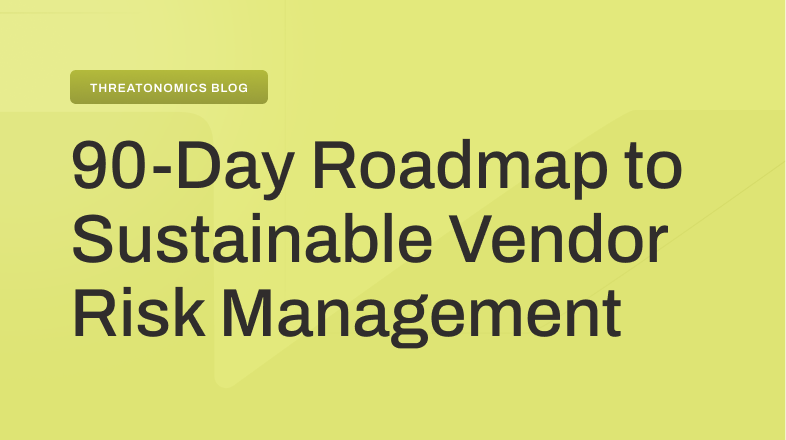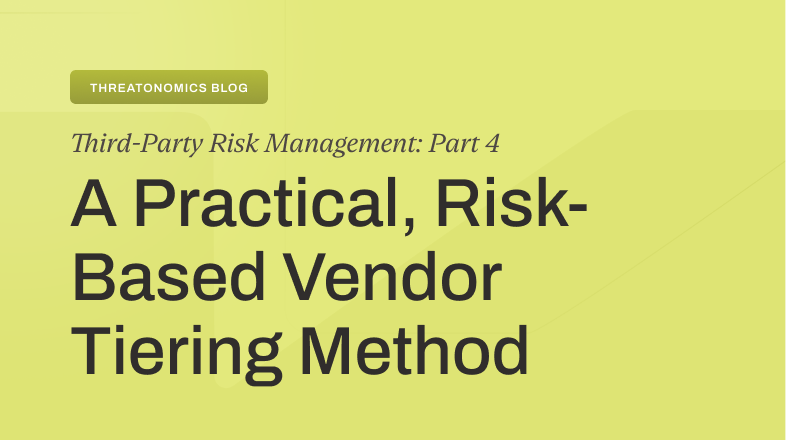The digital domain continues to expand, bringing with it an array of complex security challenges for businesses. As organizations navigate through this complex web of threats, the role of IT Security is paramount. This foundational element serves as both shield and navigator, guiding companies while ensuring mission-critical operations remain unhampered.
At the core of every successful organization lies a comprehensive understanding of the risks it faces, including those emanating from cyber threats. The necessity for robust IT Security strategies becomes apparent when considering the potential ramifications of security breaches, including operational disruptions, financial losses, and reputational damage. As businesses strive for growth in a digital-first environment, aligning IT Security efforts with broader business objectives is not optional but essential for safeguarding future success.
Recognizing the vital role of IT Security demands a shift in perspective. Rather than viewing it as a cost center or regulatory checkbox, successful businesses see it as a strategic partner.
Shifting our perspective, we begin to see IT Security in a new light—not just as a safeguard but as an essential pillar of strategy, crucial for operational resilience.
The Role of IT Security in Business Continuity and Operations
IT Security’s significance extends beyond mere protection against external threats; it is a critical driver of business continuity. Digital operations are foundational to business success, the ability to maintain uninterrupted services in the face of cyber threats is indispensable. Effective IT Security strategies ensure that businesses can withstand and quickly recover from incidents, minimizing downtime and maintaining customer trust.
Moreover, IT Security plays a crucial role in facilitating business operations. By safeguarding the systems and networks that support daily activities, IT Security enables businesses to operate smoothly and efficiently. This seamless integration of security measures into business operations not only protects against threats but also enhances overall operational agility.
Intersection of IT Security and Business Risks
The interplay between IT Security and business risks highlights the need for a comprehensive approach to risk management. Cyber threats can impact various aspects of business operations, from financial stability to strategic positioning. A breach can lead to significant financial losses, both from the immediate fallout and long-term reputational damage. Integrating IT Security into the financial risk management framework is critical for safeguarding assets and ensuring business viability.
Operational risks are another critical area where IT Security plays a decisive role. Cyberattacks can disrupt the availability of critical systems and data, leading to operational downtime and reduced productivity. By implementing robust security measures, businesses can mitigate these risks, ensuring the continuity of operations even in the face of cyber incidents. Strategically, IT Security is integral to maintaining a competitive edge. In a market where consumer trust can be a key differentiator, demonstrating a commitment to security can enhance brand reputation and loyalty. Furthermore, as businesses pursue digital transformation initiatives, IT Security must be embedded in strategic planning from the outset, ensuring that innovation does not come at the expense of security.
IT Security Strategies and Their Contributions
Cybersecurity measures, network security protocols, and data privacy practices form the triad of defense mechanisms that protect against a wide spectrum of threats. Effective IT security strategies are crucial for safeguarding against threats like phishing attacks and preventing unauthorized access to sensitive information. These strategies are foundational in maintaining the integrity and confidentiality of business data, and each contributes in a distinct way to an organization’s overall risk mitigation efforts.
3 Key IT Security Strategies:
Endpoint Security
- Endpoint Detection and Response (EDR): Software installed on endpoints that prevents, detects and responds to malicious software or suspicious activity. Automatic steps are taken to remediate threats and/or isolate the endpoint from the network to prevent further damage.
- Security Patch Management: Remediating vulnerabilities of existing operating systems and applications by applying vendor-released fixes/updates.
Network Security
- Firewalls: Blocks or permits incoming or outgoing traffic on a network based on predetermined security rules, acting as a barrier between trusted and untrusted networks.
- Intrusion Detection and Prevention Systems (IDPS): Monitors network traffic for suspicious activity and known threats, with automatic response capabilities.
- Virtual Private Networks (VPN): Provides a secure tunnel of communication over the internet by encrypting the traffic in transit.
Data Privacy Practices
- Data Encryption: Encrypts data at rest and in transit to protect it from unauthorized access.
- Access Controls: Restricts access to sensitive data based on user roles to ensure only authorized personnel have access.
- Data Anonymization: Removes personally identifiable information from data sets to protect individual privacy and comply with privacy laws.
The integration of these strategies into a cohesive IT Security framework achieves comprehensive risk mitigation. This integration requires a strategic alignment of IT Security initiatives with business objectives, ensuring that security measures support rather than hinder business goals. Through this alignment, businesses can achieve a balance between innovation and risk management, enabling them to navigate the digital domain confidently.
Seamless Integration of IT Security into Risk Mitigation Strategies
The seamless integration of IT Security into broader business risk mitigation strategies is not without its challenges. However, it can provide a robust foundation for business resilience when executed effectively. By incorporating IT Security considerations into the planning and execution of business strategies, organizations can proactively address potential vulnerabilities and enhance their overall risk posture.
Aligning IT Security initiatives with overall business goals is crucial for maximizing their effectiveness and ensuring that they support the organization’s strategic direction. This alignment requires open communication between IT security teams and business stakeholders, ensuring that security measures do not impede business operations but rather enable them to thrive safely. By involving IT Security in strategic planning discussions, organizations can ensure that security considerations are integrated into new projects and initiatives from the outset.
One of the key challenges in this alignment process is balancing security needs with business agility. Organizations must navigate the fine line between implementing stringent security measures and maintaining the flexibility required to seize new business opportunities. Adopting a risk-based approach to IT Security allows organizations to assess and prioritize their security initiatives based on their potential impact on business objectives.

Stay ahead of cyber risk with the latest intel on threats, best practices, and more.
Sign up for our Threatonomics newsletter to get the latest insights from our experts in cybersecurity, insurance, and risk management; all you need to achieve Cyber Resilience.
SubscribeAligning IT Security with Business Strategy
To effectively integrate IT security with business strategy, organizations must adopt a series of best practices. These practices are designed to embed a culture of security throughout the organization, ensuring that cybersecurity measures are not just technical requirements, but integral parts of daily operations and strategic decision-making.
Best practices for achieving this alignment include:
- Regular Security Awareness Training: Continuously educating all employees about cybersecurity threats and safe practices to ensure they understand the role they play in maintaining organizational security.
- Integrating Security Metrics into Business Performance Reviews: Measuring and reviewing security metrics alongside other business performance metrics to emphasize their importance and impact on overall business health.
- Establishing a Dedicated Cross-functional Team: Creating a team that includes members from IT, security, and various business units to oversee the integration of IT security with business strategies. This team facilitates a unified approach to managing cyber risks, aligning them with business objectives and maintaining cyber resilience.
Case Study: Real-World Risk Mitigation and IT Security
The journey of a company within the automotive sector underscores the pivotal role IT security plays in modern business risk mitigation. Significant improvements in cybersecurity can lead to more favorable cyber insurance terms.
Facing the Challenge
Initially struggling with an underdeveloped cybersecurity framework, the company recognized its vulnerability to cyber threats. With a limited IT staff who could dedicate only a fraction of their time to cybersecurity, coupled with a negligible budget for security improvements, the company’s ability to secure a comprehensive cyber insurance policy was severely compromised.
A Strategic Shift
The realization that effective IT security is indispensable for better insurance coverage prompted the company to overhaul its cybersecurity strategies fundamentally. This significant shift not only enhanced their defense against cyber threats but also exemplified the intrinsic connection between cybersecurity vigilance and insurance viability.
The Lesson Learned
This case study highlights a key principle: enhancing security measures invariably improves insurance coverage prospects. By proactively upgrading their cybersecurity stance, businesses can shield themselves more effectively from the consequences of cyber incidents while simultaneously gaining more favorable insurance conditions.
For companies aiming to fortify their risk mitigation techniques, this example vividly demonstrates the indispensable contribution of IT security to holistic business risk management. Better cybersecurity practices not only secure a company’s digital assets and reputation but also open the door to enhanced cyber insurance benefits.
Read the full case study on how this automotive company’s concerted effort to boost its cybersecurity framework positively influenced its insurance coverage dynamics.
Discover the Power of Resilience’s Risk Mitigation Techniques
The integral role of IT Security in business risk management cannot be overstated. As organizations navigate various complexities, the need for a comprehensive and integrated approach to IT Security becomes increasingly clear. By viewing IT Security as a central pillar of their business strategy, organizations can not only mitigate risks but also enhance their operational resilience, protect their strategic interests, and maintain compliance with regulatory requirements.
The journey towards Cyber Resilience is ongoing, requiring constant vigilance, adaptation, and collaboration. By prioritizing IT Security and aligning it with their broader business objectives, organizations can safeguard their future and ensure that they are prepared to face the challenges of cyber threats. Discover the difference that a tailored, proactive approach to IT Security can make in safeguarding your business’s future. Request your demo of Resilience today and take a significant stride towards cyber resilience.








